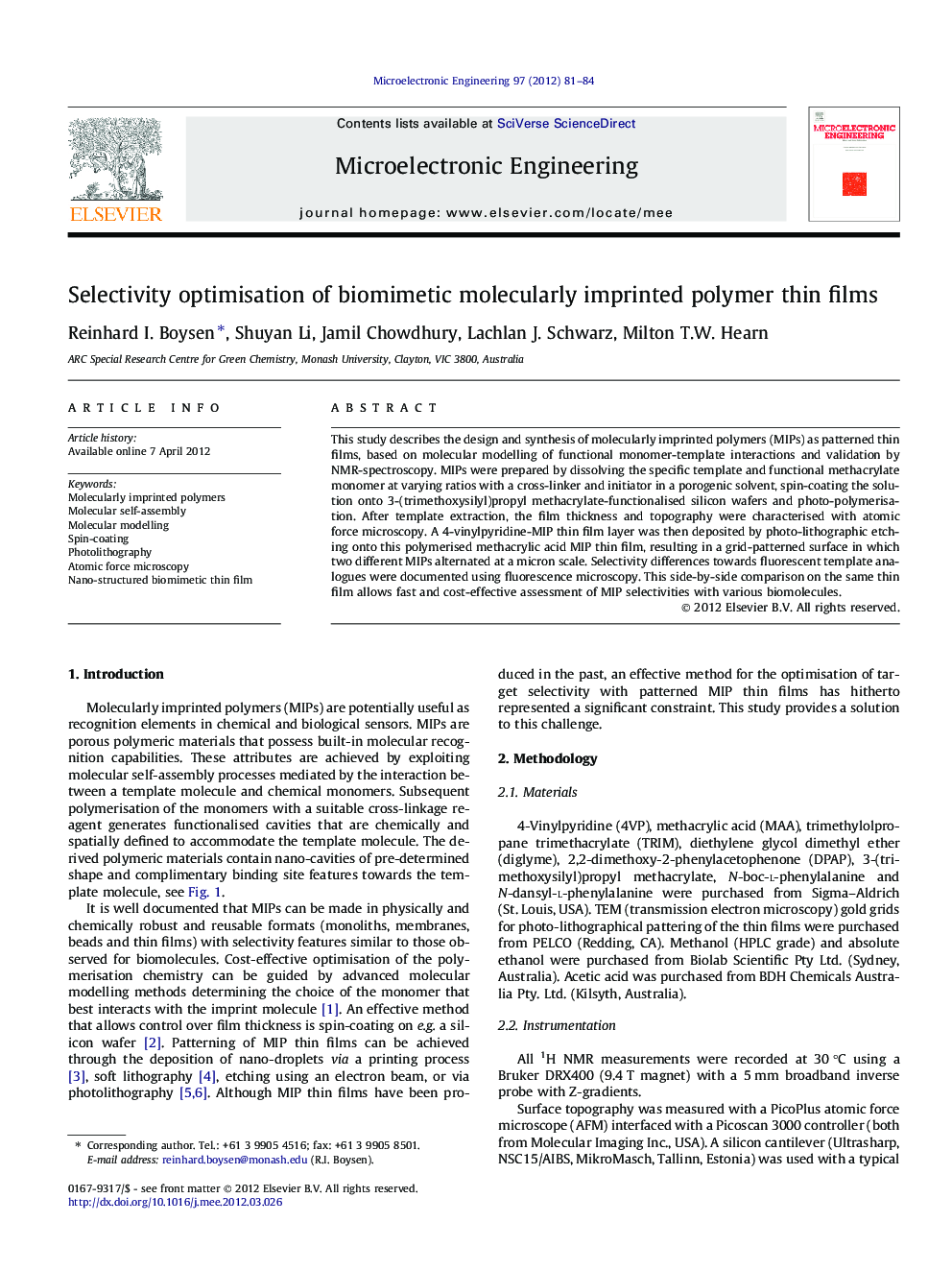| Article ID | Journal | Published Year | Pages | File Type |
|---|---|---|---|---|
| 544340 | Microelectronic Engineering | 2012 | 4 Pages |
This study describes the design and synthesis of molecularly imprinted polymers (MIPs) as patterned thin films, based on molecular modelling of functional monomer-template interactions and validation by NMR-spectroscopy. MIPs were prepared by dissolving the specific template and functional methacrylate monomer at varying ratios with a cross-linker and initiator in a porogenic solvent, spin-coating the solution onto 3-(trimethoxysilyl)propyl methacrylate-functionalised silicon wafers and photo-polymerisation. After template extraction, the film thickness and topography were characterised with atomic force microscopy. A 4-vinylpyridine-MIP thin film layer was then deposited by photo-lithographic etching onto this polymerised methacrylic acid MIP thin film, resulting in a grid-patterned surface in which two different MIPs alternated at a micron scale. Selectivity differences towards fluorescent template analogues were documented using fluorescence microscopy. This side-by-side comparison on the same thin film allows fast and cost-effective assessment of MIP selectivities with various biomolecules.
Graphical abstractFigure optionsDownload full-size imageDownload as PowerPoint slideHighlights► Biomimetic molecularly imprinted polymer (MIP) thin films were made on silicon wafers. ► Polymerisation chemistry was optimised with molecular modelling and NMR-spectroscopy. ► Patterned, double-layered amino acid imprinted films were made with photolithography. ► Fluorescent amino acids analogues of the template were used as selectivity probes. ► The side-by-side comparison of films allowed reliable assessment of MIP selectivities.
